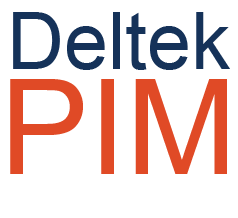Using Compensation Strategies to Retain Talent
 Compensation can directly impact the engagement and productivity of your talent. Without engaged talent, project-based firms will have a difficult time delivering successful projects. Retaining quality talent is a necessity to firm success so a well-planned compensation strategy is crucial. Let’s look at some components of an effective compensation strategy.
Compensation can directly impact the engagement and productivity of your talent. Without engaged talent, project-based firms will have a difficult time delivering successful projects. Retaining quality talent is a necessity to firm success so a well-planned compensation strategy is crucial. Let’s look at some components of an effective compensation strategy.
Budgeting
Salaries usually make up the largest part of the overall budget for project-based firms. Using Deltek Talent Compensation, budgets can be set up for each part of the compensation review cycle. They can be further broken down by level so reviewing managers will know how much money is available for compensation. There should, however, be some flexibility for outstanding efforts.
Rules and Guidelines
Rules and guidelines help employees to understand compensation plans. Having specific pay grades clarifies salary differentials. Employees can see what the expectations are for each level such as required certifications, education or professional experiences. With the guidelines in place, managers can make compensation recommendations using approval workflows.
Salary Audits
Staying in-tune to the market value of positions with your firm is important. Market data can be uploaded into Deltek Talent Compensation to show details about the current status of an employee in relation to the market. This allows managers to see how competitive their firm salaries are compared to other similar firms.
Total Rewards Package
Employees need to see all parts of the compensation package. The base salary is just one aspect of the package. The health benefits component is significant in the rewards. Additionally, any short-term incentive pay like commissions or bonuses or long-term incentive pay such as stock options make a heartier, more desirable compensation package.
Be Visible
Deltek Talent Compensation provides insight into all aspects of the compensation plan. Employees want to see that they are being paid fairly and that reasonable expectations are established for their positions. Employers need to stay on budget yet stay competitive in the market. With a visible technology solution in place, all needs of the employee and employer are met.
Implement a Comprehensive Compensation Strategy Now
With unemployment being at a historic low, not having a visible strategic compensation plan will affect retention of top talent. While putting such a plan in place may seem overwhelming, it doesn’t have to be. Once your firm has established the key components of your compensation strategy, communicate it to your employees. With top talent buy in, retention will no longer be an issue.



 Deltek Talent Management is a powerful set of tools for firms to manage the complete employee lifecycle. It offers an extensive product line to handle acquisition, learning and development, performance and compensation. With such a robust HR system, there are many notable features - some of which are underused. Let’s check out these hidden features and see what benefits they provide.
Deltek Talent Management is a powerful set of tools for firms to manage the complete employee lifecycle. It offers an extensive product line to handle acquisition, learning and development, performance and compensation. With such a robust HR system, there are many notable features - some of which are underused. Let’s check out these hidden features and see what benefits they provide.
 With the shift to an employee-centric marketplace, it has never been more important to focus on talent acquisition and retention. With Deltek Talent Management, you can manage the entire employee lifecycle in one built-in platform. You can efficiently handle acquisition, performance, learning development and compensation. By managing talent, you can retain the best workers, drive employee engagement and ultimately deliver more successful projects. Let’s see how Deltek Talent Management will help your firm be a winning player in the war for talent.
With the shift to an employee-centric marketplace, it has never been more important to focus on talent acquisition and retention. With Deltek Talent Management, you can manage the entire employee lifecycle in one built-in platform. You can efficiently handle acquisition, performance, learning development and compensation. By managing talent, you can retain the best workers, drive employee engagement and ultimately deliver more successful projects. Let’s see how Deltek Talent Management will help your firm be a winning player in the war for talent.

 It used to be that people needed companies - employees were loyal, jobs were scarce, and everyone accepted the standard employment package offered. Today, things are very different. Companies need people – talent is hard to find, few make long term commitments, and many are demanding a lot more than before. Project-based companies are particularly impacted since without the right people in place, projects suffer, customers suffer and so does the bottom line. Therefore, having an applicant tracking system is a necessity to deal with the challenges of talent acquisition.
It used to be that people needed companies - employees were loyal, jobs were scarce, and everyone accepted the standard employment package offered. Today, things are very different. Companies need people – talent is hard to find, few make long term commitments, and many are demanding a lot more than before. Project-based companies are particularly impacted since without the right people in place, projects suffer, customers suffer and so does the bottom line. Therefore, having an applicant tracking system is a necessity to deal with the challenges of talent acquisition.




 Change is inevitable but planning for change can certainly alleviate its impact. If you’re the owner or leader of a professional services firm, you know that senior level personnel are eventually going to retire or might simply move on to new challenges. With this in mind, your firm can be prepared by having a succession plan in place for when employees leave.
Change is inevitable but planning for change can certainly alleviate its impact. If you’re the owner or leader of a professional services firm, you know that senior level personnel are eventually going to retire or might simply move on to new challenges. With this in mind, your firm can be prepared by having a succession plan in place for when employees leave.

 According to the 39
According to the 39